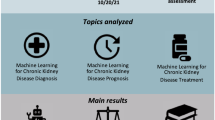Abstract
We prospectively validate the efficacy of the frailty discriminant score (FDS) in individuals with urological cancers, as there has been growing importance in evaluating frailty in clinical practice. A prospective, multicenter study was conducted from February 2017 to April 2019. We enrolled 258 patients with urological cancers and 301 community-dwelling participants who were assessed for frailty. Frailty was assessed using FDS that includes ten items, such as physical, mental, and blood biochemical tests. The primary outcome was the non-inferiority (margin 5%) of FDS in discriminating patients with urological cancers from controls (Ctrl). The sensitivity, specificity, and area under the receiver operating characteristic (AUROC) curve for each predictive test were calculated. The secondary endpoints included the prediction of overall survival between patients with urological cancer who have high and low FDS. FDS was significantly higher in patients with urological cancers than that in the Ctrl. The AUROC curves for individuals with non-prostate cancers (such as bladder cancer, upper tract urothelial carcinoma, and renal cell carcinoma; 0.942) and those with prostate cancer (0.943) were within the non-inferior margin. The overall survival values were significantly lower in patients with higher FDS score than in those with lower FDS score. The study met its primary and secondary endpoints. The FDS is a reliable and valid tool for assessing frailty and prognosis in patients with urological cancers.




Similar content being viewed by others
References
Lin HS, Watts JN, Peel NM, Hubbard RE. Frailty and post-operative outcomes in older surgical patients: a systematic review. BMC Geriatr. 2016;16(1):157. https://doi.org/10.1186/s12877-016-0329-8.
Droz J-P, Audisio RA, International Society of Geriatric Oncology. Management of urological cancers in older people. Management of cancer in older people; 1. London: Springer; 2013.
Walston J, Hadley EC, Ferrucci L, Guralnik JM, Newman AB, Studenski SA, et al. Research agenda for frailty in older adults: toward a better understanding of physiology and etiology: summary from the American Geriatrics Society/National Institute on Aging Research Conference on Frailty in Older Adults. BMC Geriatr. 2006;54(6):991–1001. https://doi.org/10.1111/j.1532-5415.2006.00745.x.
Byard RW. Frailty syndrome—medicolegal considerations. J Forensic Leg Med. 2015;30:34–8. https://doi.org/10.1016/j.jflm.2014.12.016.
Verghese J, Holtzer R, Lipton RB, Wang C. Quantitative gait markers and incident fall risk in older adults. J Gerontol Ser A. 2009;64(8):896–901. https://doi.org/10.1093/gerona/glp033.
Sato T, Hatakeyama S, Okamoto T, Yamamoto H, Hosogoe S, Tobisawa Y, et al. Slow gait speed and rapid renal function decline are risk factors for postoperative delirium after urological surgery. PLoS ONE. 2016;11(5):e0153961. https://doi.org/10.1371/journal.pone.0153961.
Townsend NT, Robinson TN. Surgical risk and comorbidity in older urologic patients. Clin Geriatr Med. 2015;31(4):591–601. https://doi.org/10.1016/j.cger.2015.06.009.
Isharwal S, Johanning JM, Dwyer JG, Schimid KK, LaGrange CA. Preoperative frailty predicts postoperative complications and mortality in urology patients. World J Urol. 2017;35(1):21–6. https://doi.org/10.1007/s00345-016-1845-z.
Fukushima H, Takemura K, Suzuki H, Koga F. Impact of sarcopenia as a prognostic biomarker of bladder cancer. Int J Mol Sci. 2018;19(10):2999. https://doi.org/10.3390/ijms19102999.
Lorenzo-Lopez L, Maseda A, de Labra C, Regueiro-Folgueira L, Rodriguez-Villamil JL, Millan-Calenti JC. Nutritional determinants of frailty in older adults: a systematic review. BMC Geriatr. 2017;17(1):108. https://doi.org/10.1186/s12877-017-0496-2.
Okamoto T, Hatakeyama S, Narita S, Takahashi M, Sakurai T, Kawamura S, et al. Impact of nutritional status on the prognosis of patients with metastatic hormone-naive prostate cancer: a multicenter retrospective cohort study in Japan. World J Urol. 2018. https://doi.org/10.1007/s00345-018-2590-2.
Fried LP, Tangen CM, Walston J, Newman AB, Hirsch C, Gottdiener J, et al. Frailty in older adults: evidence for a phenotype. J Gerontol Ser A. 2001;56(3):M146–56.
Searle SD, Mitnitski A, Gahbauer EA, Gill TM, Rockwood K. A standard procedure for creating a frailty index. BMC Geriatr. 2008;8:24. https://doi.org/10.1186/1471-2318-8-24.
Hamaker ME, Jonker JM, de Rooij SE, Vos AG, Smorenburg CH, van Munster BC. Frailty screening methods for predicting outcome of a comprehensive geriatric assessment in elderly patients with cancer: a systematic review. Lancet Oncol. 2012;13(10):e437–44. https://doi.org/10.1016/s1470-2045(12)70259-0.
Suskind AM, Jin C, Cooperberg MR, Finlayson E, Boscardin WJ, Sen S, et al. Preoperative frailty is associated with discharge to skilled or assisted living facilities after urologic procedures of varying complexity. Urology. 2016. https://doi.org/10.1016/j.urology.2016.03.073.
Suskind AM, Walter LC, Jin C, Boscardin J, Sen S, Cooperberg MR, et al. Impact of frailty on complications in patients undergoing common urological procedures: a study from the American College of Surgeons National Surgical Quality Improvement database. BJU Int. 2016;117(5):836–42. https://doi.org/10.1111/bju.13399.
Droz JP, Boyle H, Albrand G, Mottet N, Puts M. Role of geriatric oncologists in optimizing care of urological oncology patients. Eur Urol Focus. 2017;3(4–5):385–94. https://doi.org/10.1016/j.euf.2017.10.012.
Sathianathen NJ, Jarosek S, Lawrentschuk N, Bolton D, Konety BR. A simplified frailty index to predict outcomes after radical cystectomy. Eur Urol Focus. 2018. https://doi.org/10.1016/j.euf.2017.12.011.
Mitsuzuka K, Arai Y. Metabolic changes in patients with prostate cancer during androgen deprivation therapy. Int J Urol. 2018;25(1):45–53. https://doi.org/10.1111/iju.13473.
Pearl JA, Patil D, Filson CP, Arya S, Alemozaffar M, Master VA, et al. Patient frailty and discharge disposition following radical cystectomy. Clin Genitourin Cancer. 2017;15(4):e615–21. https://doi.org/10.1016/j.clgc.2016.12.013.
Meng X, Press B, Renson A, Wysock JS, Taneja SS, Huang WC, et al. Discriminative ability of commonly used indexes to predict adverse outcomes after radical cystectomy: comparison of demographic data, American Society of Anesthesiologists, modified charlson comorbidity index, and modified frailty index. Clin Genitourin Cancer. 2018;16(4):e843–50. https://doi.org/10.1016/j.clgc.2018.02.009.
De Nunzio C, Cicione A, Izquierdo L, Lombardo R, Tema G, Lotrecchiano G, et al. Multicenter analysis of postoperative complications in octogenarians after radical cystectomy and ureterocutaneostomy: the role of the frailty index. Clin Genitourin Cancer. 2019. https://doi.org/10.1016/j.clgc.2019.07.002.
Okita K, Hatakeyama S, Fujita N, Konishi S, Yamamoto H, Imai A, et al. Postoperative weight loss followed by radical cystectomy predicts poor prognosis in patients with muscle-invasive bladder cancer. Med Oncol. 2018;36(1):7. https://doi.org/10.1007/s12032-018-1232-2.
Hernandez Torres C, Hsu T. Comprehensive geriatric assessment in the older adult with cancer: a review. Eur Urol Focus. 2017;3(4–5):330–9. https://doi.org/10.1016/j.euf.2017.10.010.
Soma O, Hatakeyama S, Okamoto T, Fujita N, Matsumoto T, Tobisawa Y, et al. Clinical implication of a quantitative frailty assessment tool for prognosis in patients with urological cancers. Oncotarget. 2018;9(25):17396–405. https://doi.org/10.18632/oncotarget.24712.
Tanaka Y, Hatakeyama S, Tanaka T, Yamamoto H, Narita T, Hamano I, et al. The influence of serum uric acid on renal function in patients with calcium or uric acid stone: a population-based analysis. PLoS ONE. 2017;12(7):e0182136. https://doi.org/10.1371/journal.pone.0182136.
Kido K, Hatakeyama S, Imai A, Yamamoto H, Tobisawa Y, Yoneyama T, et al. Sleep disturbance has a higher impact on general and mental quality of life reduction than Nocturia: results from the community health survey in Japan. Eur Urol Focus. 2018. https://doi.org/10.1016/j.euf.2018.04.017.
Matsumoto T, Hatakeyama S, Imai A, Tanaka T, Hagiwara K, Konishi S, et al. Relationship between oxidative stress and lower urinary tract symptoms: results from a community health survey in Japan. BJU Int. 2019;123(5):877–84. https://doi.org/10.1111/bju.14535.
Narita T, Hatakeyama S, Yoneyama T, Narita S, Yamashita S, Mitsuzuka K, et al. Clinical implications of serum N-glycan profiling as a diagnostic and prognostic biomarker in germ-cell tumors. Cancer Med. 2017;6(4):739–48. https://doi.org/10.1002/cam4.1035.
Oikawa M, Hatakeyama S, Yoneyma T, Tobisawa Y, Narita T, Yamamoto H, et al. Significance of serum N-glycan profiling as a diagnostic biomarker in urothelial carcinoma. Eur Urol Focus. 2018;4(3):405–11. https://doi.org/10.1016/j.euf.2016.11.004.
Tanaka T, Hatakeyama S, Yamamoto H, Narita T, Hamano I, Matsumoto T, et al. Clinical relevance of aortic calcification in urolithiasis patients. BMC Urol. 2017;17(1):25. https://doi.org/10.1186/s12894-017-0218-2.
Momota M, Hatakeyama S, Tokui N, Sato T, Yamamoto H, Tobisawa Y, et al. The impact of preoperative severe renal insufficiency on poor postsurgical oncological prognosis in patients with urothelial carcinoma. Eur Urol Focus. 2018. https://doi.org/10.1016/j.euf.2018.03.003.
Okita K, Hatakeyama S, Tanaka T, Ikehata Y, Tanaka T, Fujita N, et al. Impact of disagreement between two risk group models on prognosis in patients with metastatic renal-cell carcinoma. Clin Genitourin Cancer. 2019;17(3):e440–6. https://doi.org/10.1016/j.clgc.2019.01.006.
Revenig LM, Canter DJ, Taylor MD, Tai C, Sweeney JF, Sarmiento JM, et al. Too frail for surgery? Initial results of a large multidisciplinary prospective study examining preoperative variables predictive of poor surgical outcomes. J Am Coll Surg. 2013;217(4):665–70. https://doi.org/10.1016/j.jamcollsurg.2013.06.012.
Amrock LG, Neuman MD, Lin HM, Deiner S. Can routine preoperative data predict adverse outcomes in the elderly? Development and validation of a simple risk model incorporating a chart-derived frailty score. J Am Coll Surg. 2014;219(4):684–94. https://doi.org/10.1016/j.jamcollsurg.2014.04.018.
Clegg A, Rogers L, Young J. Diagnostic test accuracy of simple instruments for identifying frailty in community-dwelling older people: a systematic review. Age Ageing. 2015;44(1):148–52. https://doi.org/10.1093/ageing/afu157.
Revenig LM, Canter DJ, Kim S, Liu Y, Sweeney JF, Sarmiento JM, et al. Report of a simplified frailty score predictive of short-term postoperative morbidity and mortality. J Am Coll Surg. 2015;220(5):904–11. https://doi.org/10.1016/j.jamcollsurg.2015.01.053.
Studenski S, Perera S, Patel K, Rosano C, Faulkner K, Inzitari M, et al. Gait speed and survival in older adults. JAMA. 2011;305(1):50–8. https://doi.org/10.1001/jama.2010.1923.
Baitar A, Van Fraeyenhove F, Vandebroek A, De Droogh E, Galdermans D, Mebis J, et al. Evaluation of the Groningen Frailty Indicator and the G8 questionnaire as screening tools for frailty in older patients with cancer. J Geriatr Oncol. 2013;4(1):32–8. https://doi.org/10.1016/j.jgo.2012.08.001.
Acknowledgements
We thank Yusuke Ishibashi, Yuki Fujita, and Yukie Nishizawa for their invaluable help with the data collection.
Funding
This study was supported by Japan Society for the Promotion of Science (JSPS) KAENHI Grant Nos. of 15H02563, 17K11119, and 18K09157 and a research Grant from the 31st Japanese Society of Geriatric Urology.
Author information
Authors and Affiliations
Contributions
Conception and design: SH, CO. Acquisition of data: OS, TO, NF, IH, TT, MM, HY, AI, TY, YH, KY, and TK. Drafting of the manuscript: SH. Critical revision of the manuscript: CO. Statistical analysis: SH, TY, and AI. Funding: SH, CO, and SN. Administrative, technical, and material support: TY and SN.
Corresponding author
Ethics declarations
Conflicts of interest
All authors have declared no conflicts of interests.
Ethical approval
This multicenter prospective study was performed according to the ethical standards of the Declaration of Helsinki and was approved by the ethics review board of the Hirosaki University School of Medicine (authorization number: 2014-297), Mutsu General Hospital, Aomori Prefectural Central Hospital, and Oyokyo Kidney Research Institute Hirosaki Hospital. All participants provided a written informed consent.
Additional information
Publisher's Note
Springer Nature remains neutral with regard to jurisdictional claims in published maps and institutional affiliations.
Electronic supplementary material
Below is the link to the electronic supplementary material.
Rights and permissions
About this article
Cite this article
Soma, O., Hatakeyama, S., Okamoto, T. et al. Multicenter prospective study validating the efficacy of a quantitative assessment tool for frailty in patients with urological cancers. Med Oncol 36, 88 (2019). https://doi.org/10.1007/s12032-019-1313-x
Received:
Accepted:
Published:
DOI: https://doi.org/10.1007/s12032-019-1313-x




